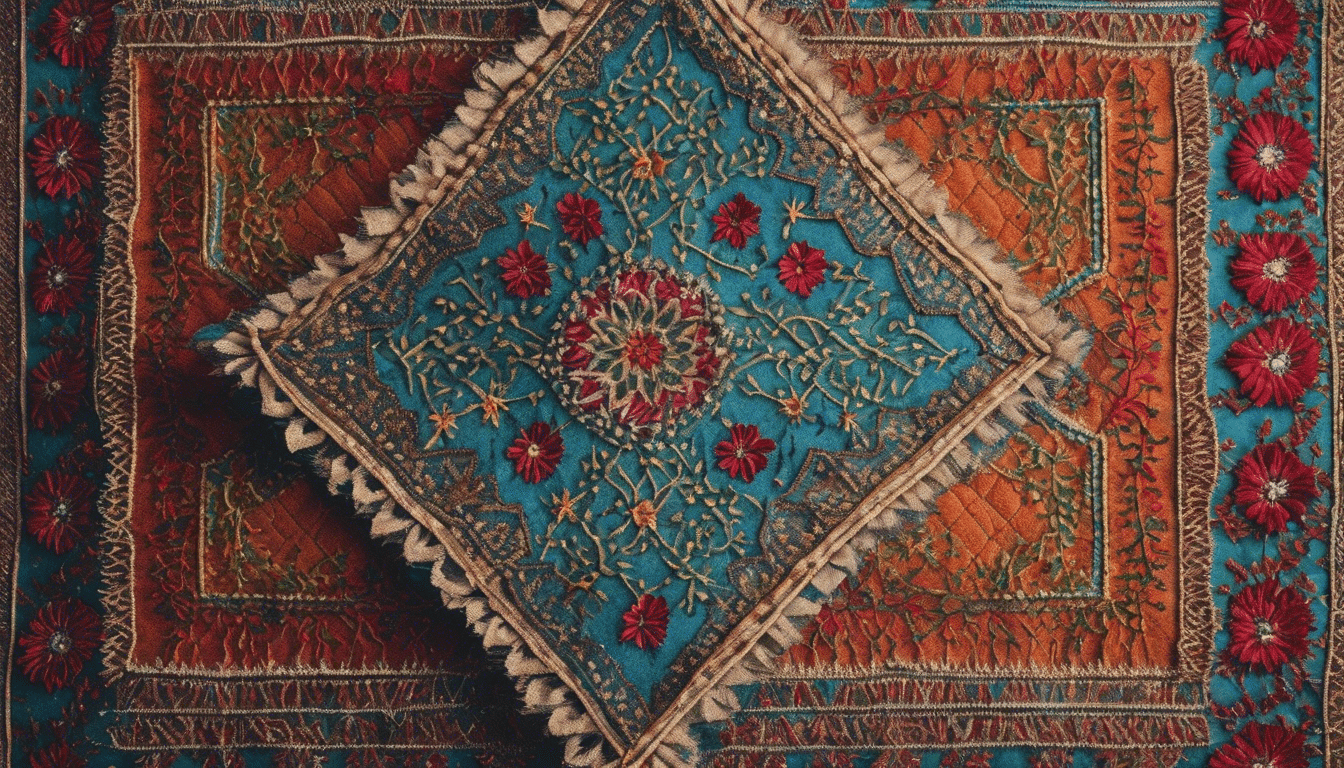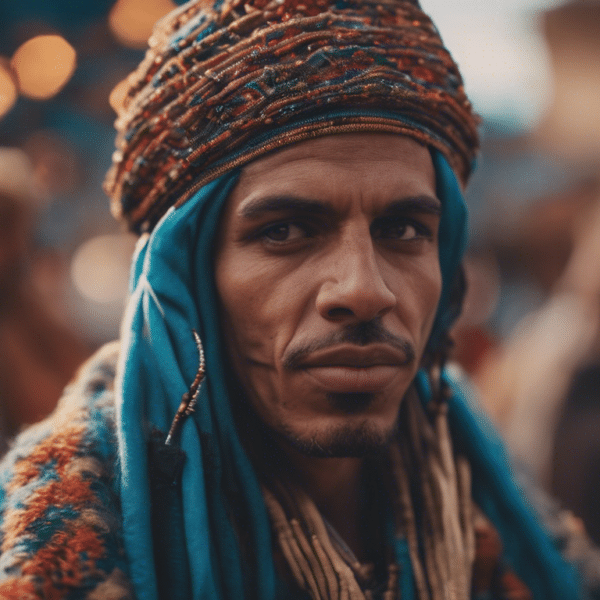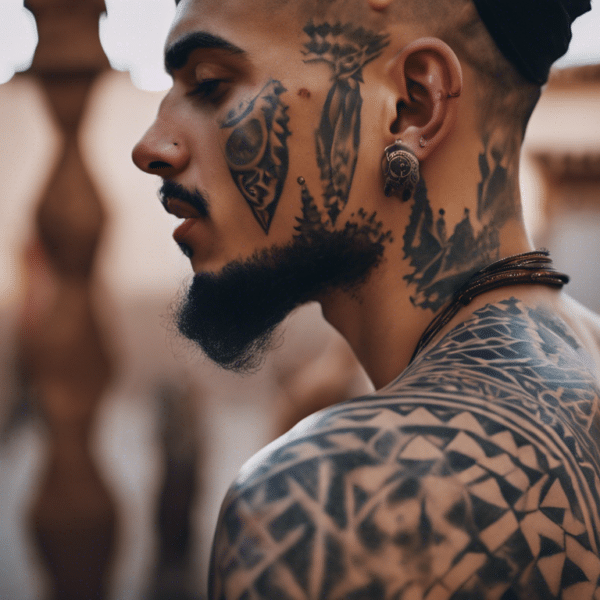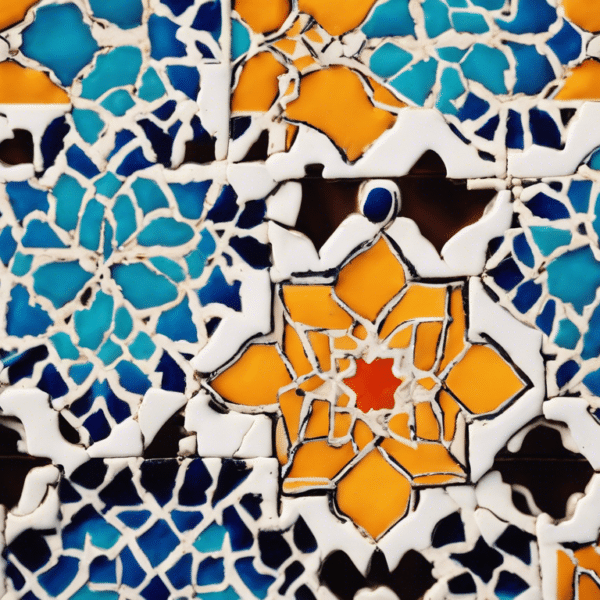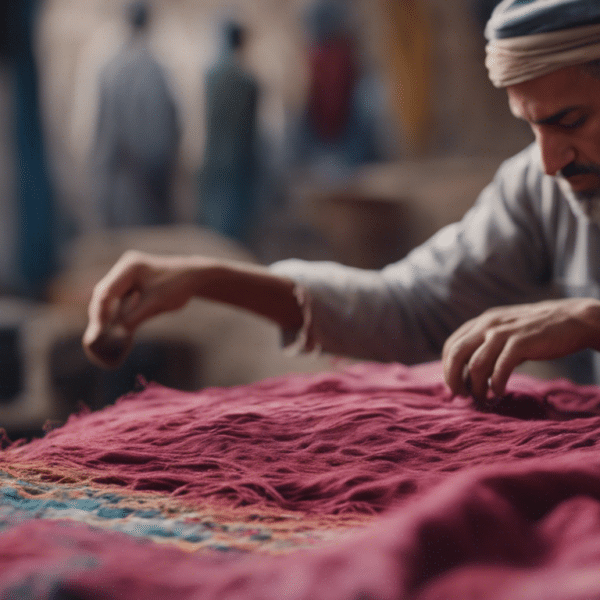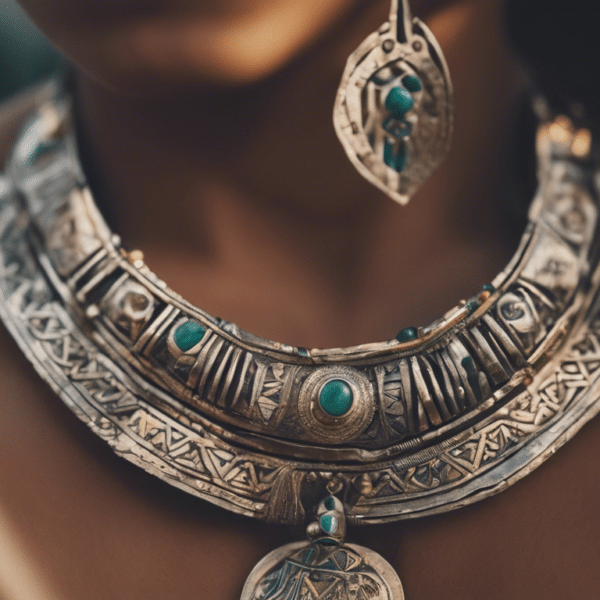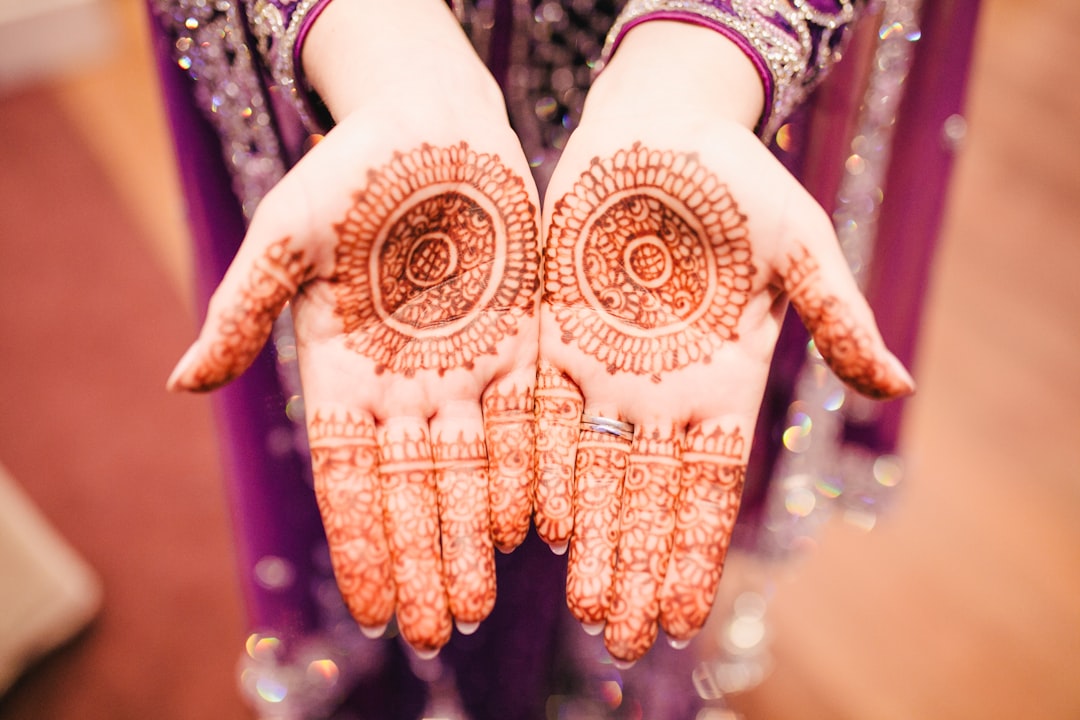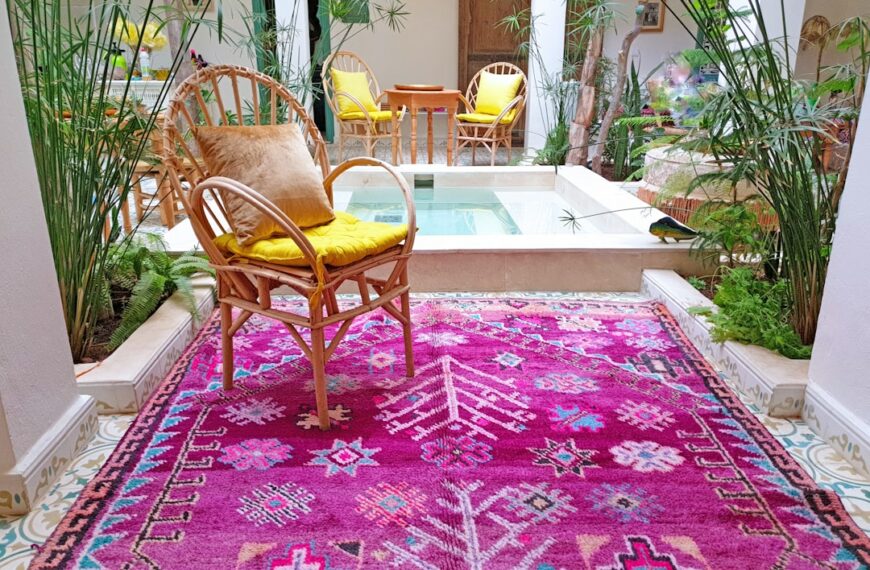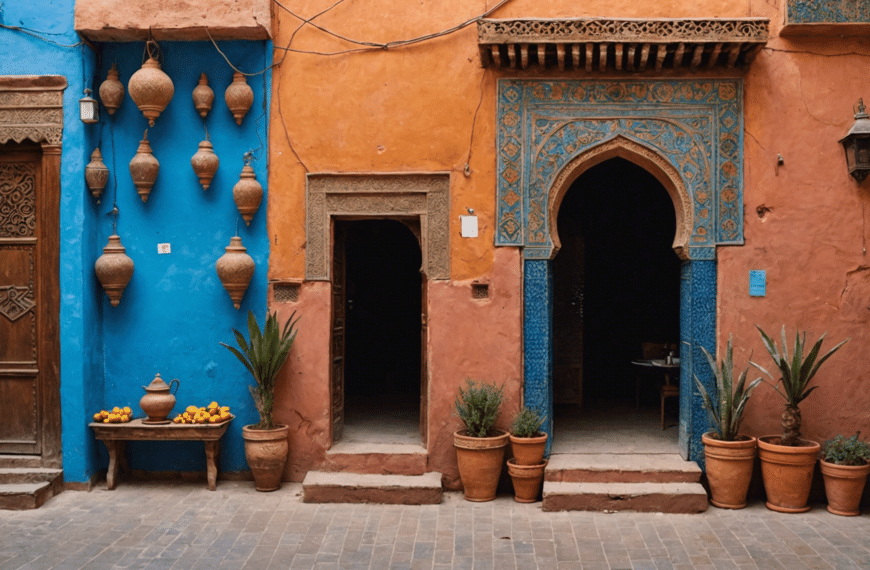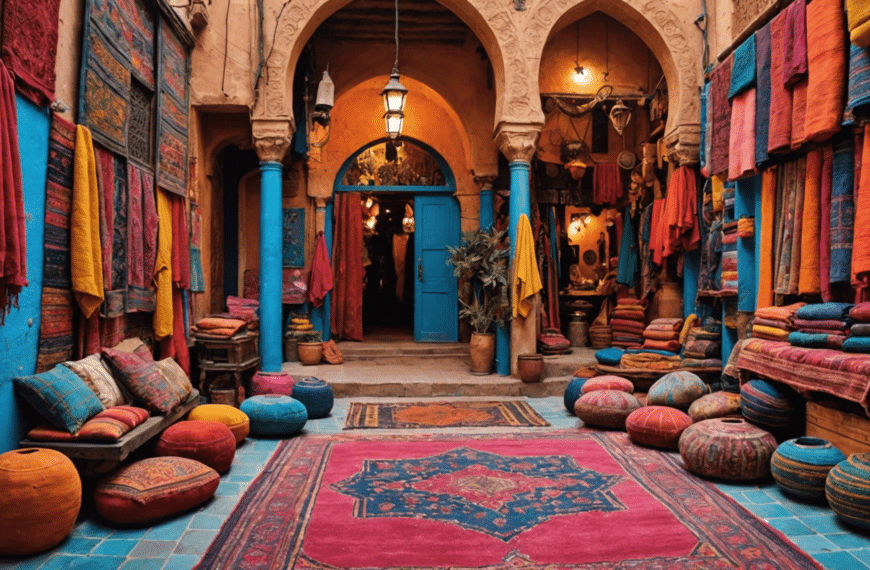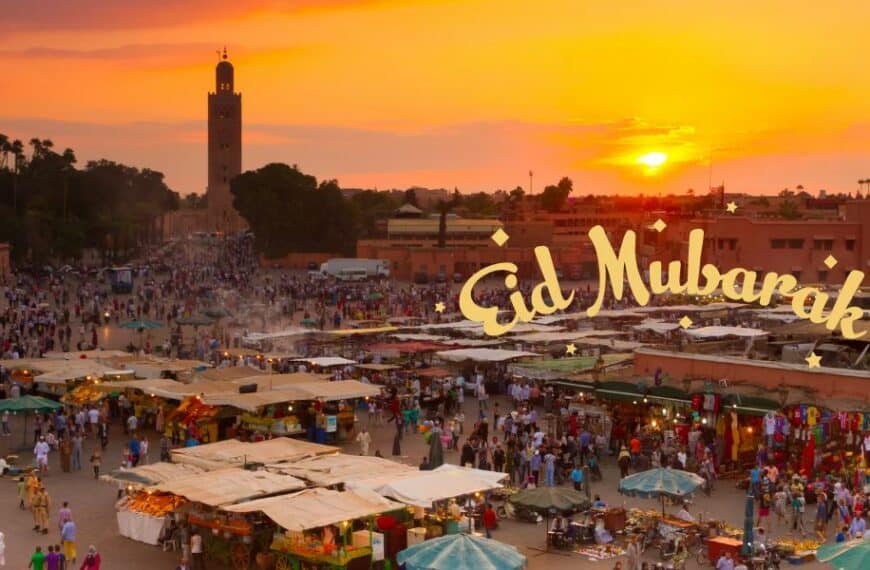Embark on a journey through the threaded tapestry of Morocco’s soul, where each stitch tells a tale of heritage and artistry. Moroccan embroidery is not merely a craft; it’s a vibrant language of identity, uniting hues, patterns, and textures into a silent yet eloquent testament of a culture woven through time. As we unravel the delicate knots and trace the bold designs, we discover how this intricate art form mirrors the profound wealth of Morocco’s artistic legacy. Join us as we explore the symbiotic relationship between needle and thread and the enduring spirit of a nation’s imagination.
The Roots of Moroccan Embroidery
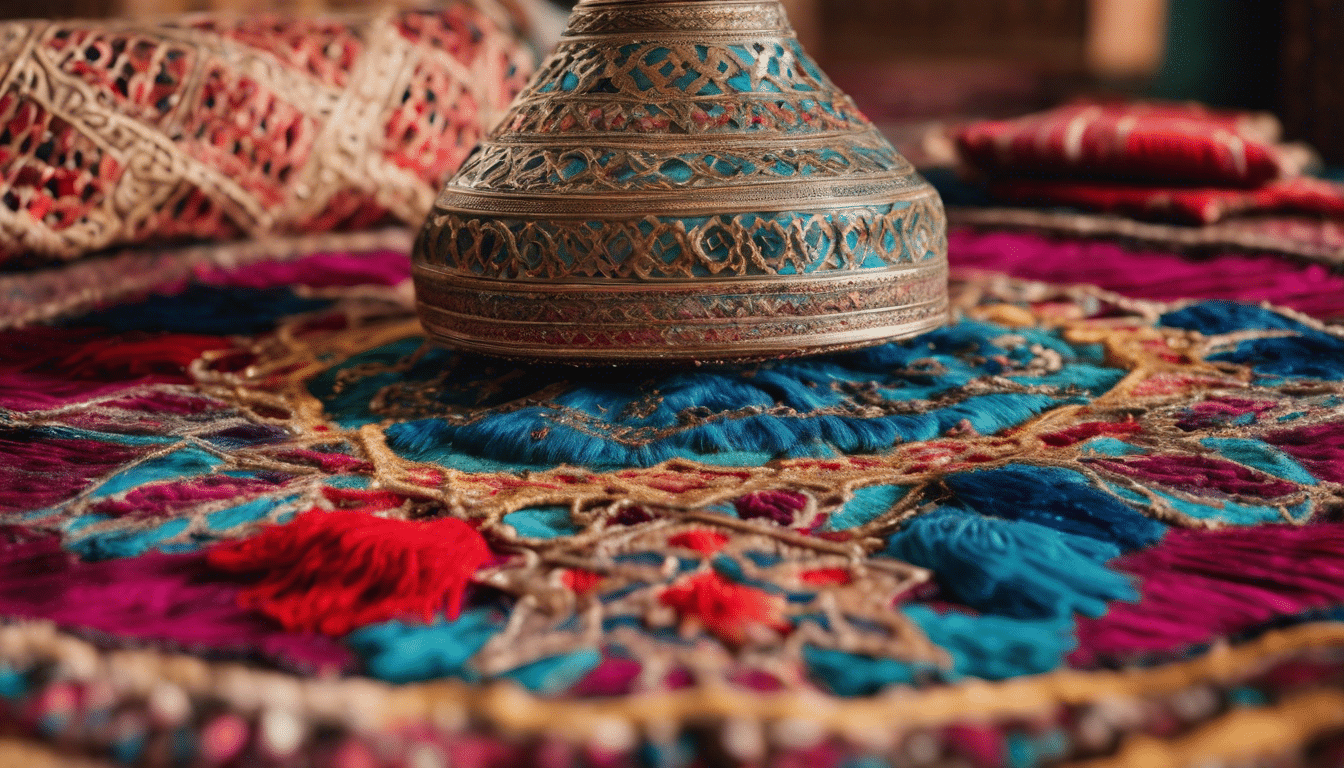
In a corner of a bustling market, where the air carries the scent of mint and spices, a delicate dance of needle and thread unfolds. The art of Moroccan embroidery is a testament to the country’s rich tapestry of history and culture. With each stitch telling its own story, the roots of Moroccan embroidery stretch deep, interlacing threads of tradition, social identity, and artistic expression.
Embroidery in Morocco is not merely a craft; it is a language of its own, one that speaks of the lives and souls of the people. To understand the essence of this intricate art form, one must delve into its origins, observing how it has been shaped by the hands of time and the lives of those who practice it.
Historical Significance and Evolution
Embroidery has been imprinted in Moroccan culture for centuries, evolving alongside the civilizations that have contributed to the country’s diverse cultural landscape. The craft was originally influenced by the array of peoples who traversed Morocco’s land—from indigenous Berbers to Arab conquerors, and later, Andalusians fleeing the Christian Reconquista of Spain.
Moroccan embroidery can be traced back to the Moorish period, when lavish embellishments and opulent patterns were crafted for royalty and affluent families. As it evolved, it became more accessible, yet it remained an indicator of social status and regional identity.
Regional Variations and Techniques
Just as the country is divided into regions, so is its embroidery. Each area boasts its own style, techniques, and patterns that are passed down through generations. For instance, Fassis embroidery from the imperial city of Fes is known for its intricate geometric patterns. In contrast, the embroidery of Tetouan often features floral motifs, reflecting a blend of Andalusian and Ottoman influences.
One cannot talk about Moroccan embroidery without mentioning the ‘tarz’, a particular stitch that demands precision and patience, often employed in ceremonial clothing and significant events such as weddings, conveying wishes of prosperity and happiness.
Materials and Motifs
Embroidery in Morocco typically utilizes silk or cotton threads on a variety of fabrics. However, the choice of thread and fabric is another element that can symbolize the wearer’s social status. Richer families might opt for silk threads on fine materials, while others would use cotton.
The motifs themselves are replete with symbolism, borrowed from nature and daily life. From the eight-pointed star, symbolizing balance and harmony, to the Hamsa hand representing protection, every design carries a hidden message waiting to be deciphered by those who understand its language.
Cultural Impact and Preservation
The importance of embroidery extends beyond its aesthetic appeal. It is a marker of cultural identity and local craftsmanship. Although time has brought changes, with machine embroidery sometimes replacing handwork, there are still many who dedicate themselves to preserving the traditional techniques.
As the world becomes more globalized, the significance of preserving such a treasured element of Moroccan heritage becomes even more pressing. Artisans who uphold the time-honored practices ensure that the roots of Moroccan embroidery remain strong, allowing future generations to witness the beauty and intricacy of this craft.
Embroidery continues to resonate with Moroccans, both as an art form and a symbol of national pride. It stands as a vibrant reminder of the past, woven into the fabric of the present, carrying stories, hopes, and dreams into the future. The roots of Moroccan embroidery, complex and beautiful, are sustained by the hands that thread love and tradition into every piece.
A Tapestry of Cultures and Influences
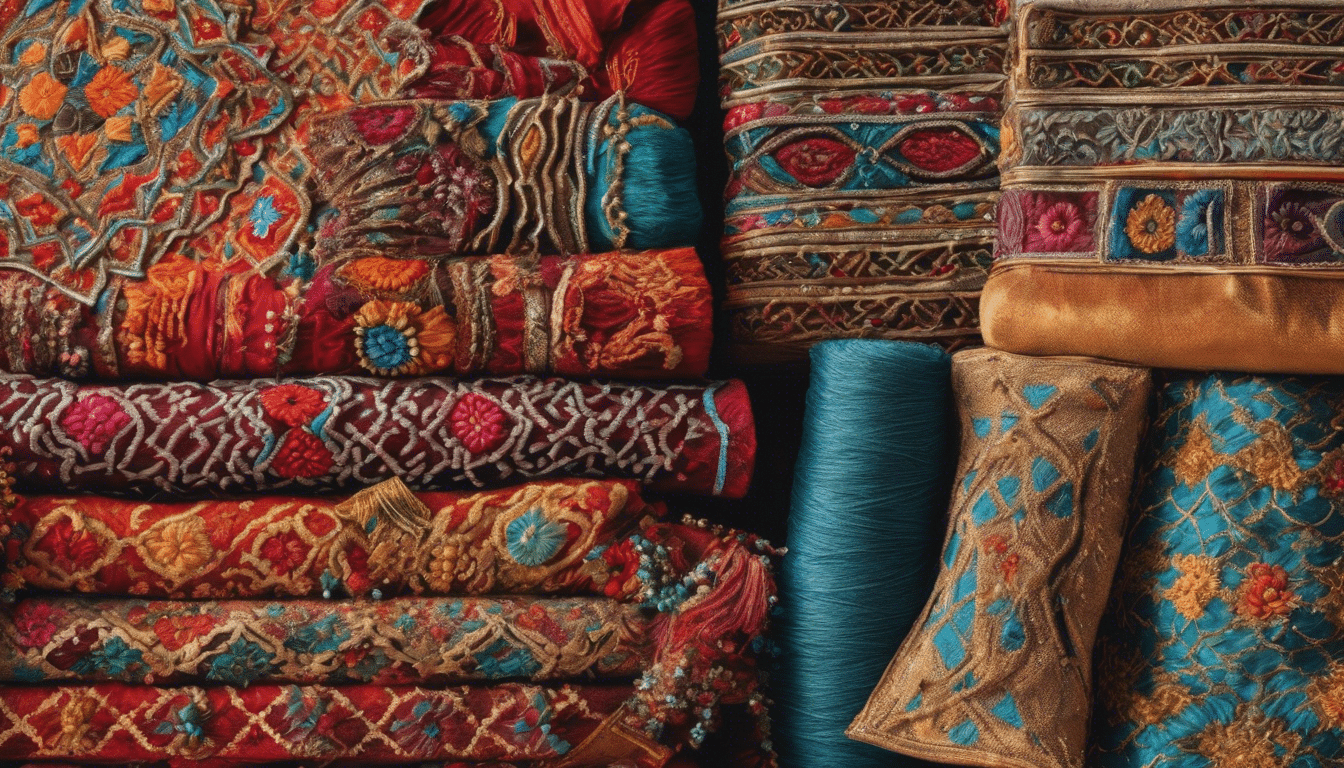
Tucked within the labyrinth streets of Moroccan medinas, the vibrant threads of history weave together to form a rich tapestry that is Moroccan embroidery. A craft passed down through the ages, it is as much a narrative of Morocco’s diverse cultural heritage as it is a showcase of technical skill and creativity.
Moroccan embroidery is not a singular tradition; rather, it is a mosaic of styles and techniques influenced by various cultures, including Islamic, Berber, Andalusian, and even Sub-Saharan. The intricate motifs and bold colors that define Moroccan textiles are a testament to these intersecting worlds.
Threads of History
The tale of Moroccan embroidery is one that begins in ancient times. Historically, embroidery was a language of its own, with every stitch and every hue relaying a message or indicating a cultural allegiance. It marked important life events, adorned religious attire, and was a sign of wealth and status.
Embroidery styles vary from region to region. The delicate Fassi style, hailing from Fez, is known for its geometric patterns and strict color palettes, often in blue and green. In contrast, the rural tribes produce more flamboyant and colorful designs, featuring flowers, fauna, and symbols of Baraka – blessings – that protect the wearer.
Tools and Techniques
Embroidery is an art that requires a deft hand and patience. The main tool is the needle, accompanied by a variety of threads, including silk, cotton, and wool. The fabric acts as a canvas, often linen or cotton, stretched tight for precision work. Stitches vary, with some regions favoring the complex couching technique, where threads are laid out on the fabric and secured with a second thread, while others employ cross-stitching for a more textured finish.
Cross-Cultural Threads
The influences on Moroccan embroidery are as varied as the regions that produce them. The Islamic influence is seen in the avoidance of human and animal representations, replaced instead by calligraphic designs and geometric patterns. The Berbers brought their animist heritage, incorporating symbols with talismanic values.
From further afield, sub-Saharan trade introduced vibrant colors and new motifs, while the Andalusian influence, brought by Muslims and Jews fleeing Spain during the Inquisition, introduced sophisticated floral designs and refined tastes.
Preservation of Tradition
Despite the pervasiveness of modern clothing, there remains a vibrant demand for traditional embroidered garments for special occasions like weddings and religious festivals. Efforts at preservation include government support for cooperatives and artisans, who pass their skills to the next generation, and the inclusion of embroidery in artisanship curriculums.
Embroidery in Modern Fashion
Modern Moroccan designers are bridging ancient technique with contemporary fashion, integrating traditional embroidery into modern pieces. This blend of old and new ensures the craft remains relevant and provides younger generations with a connection to their heritage.
A Living Art
The story of Moroccan embroidery continues today, as artisans across the nation keep their traditions alive, creating works that narrate the deep, interwoven cultural history of Morocco. In its stitches, one finds the history of conquerors and traders, religions and traditions, all of which are bound together in a vibrant, living art form that is ever-evolving yet steeped in history.
From intricate caftans to decorated home textiles, Moroccan embroidery remains a tactile expression of the nation’s identity and cultural richness. Each piece is a testament to the generations of women and men who have preserved this beautiful craft, grounding it in the past while tailoring it for the future. Whether one is a connoisseur like Elena or a newcomer to the intricate world of Moroccan artisanship, the threads of Moroccan embroidery offer a captivating glimpse into a nation’s soul.
The Language of Stitches and Patterns
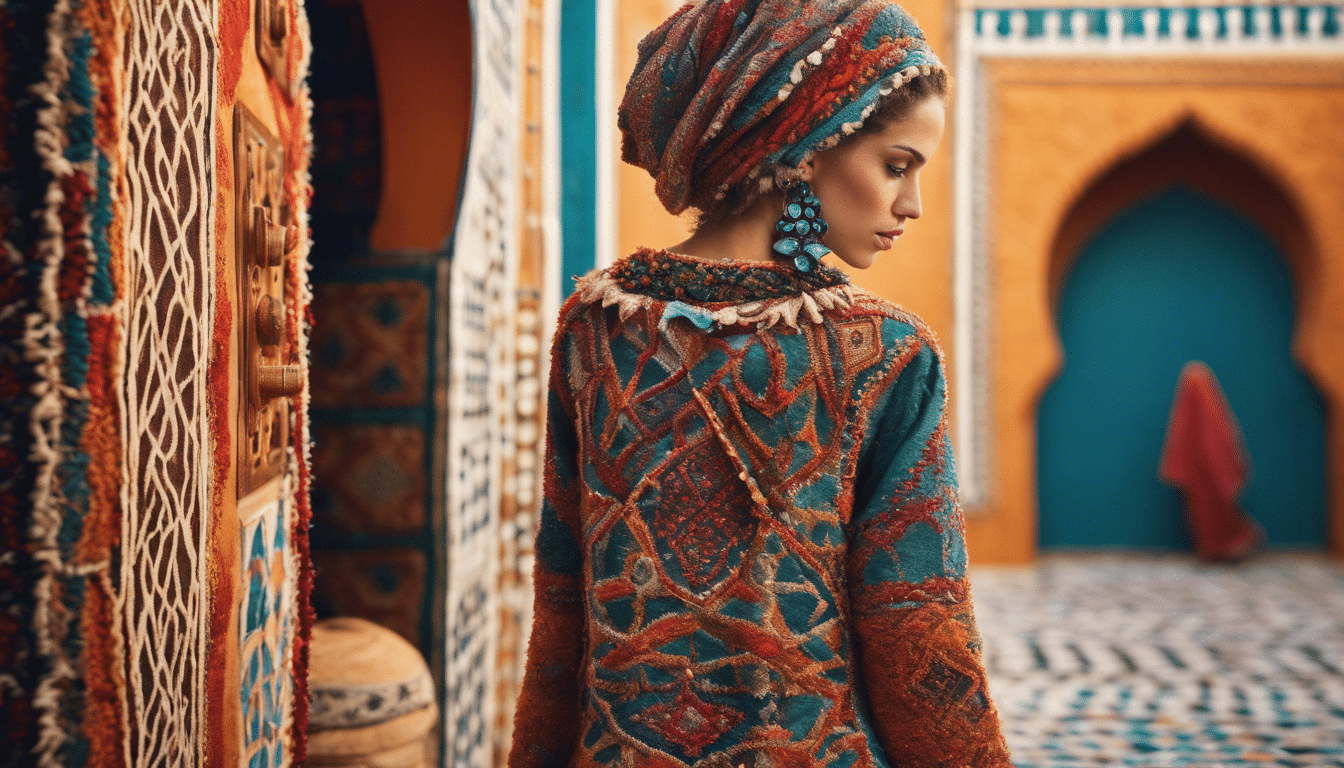
Tracing the delicate lines and contours of traditional Moroccan embroidery, one can’t help but be transported into a realm woven with history and symbolism. Each thread and each pattern speaks volumes about the legacy of an art form that has been passed down through generations. For those willing to listen, these stitches narrate tales of culture, identity, and the human touch behind every creation.
Embroidery in Morocco isn’t just a technique for adorning fabric; it’s a language of its own. The array of stitches and the vivid patterns they form are rich with meaning, expressing sentiments, beliefs, and stories. A single piece of embroidered cloth is a tapestry of messages waiting to be deciphered by those who know the visual lexicon.
The stitching speaks: discovering the motifs
One cannot discuss Moroccan embroidery without delving into the plethora of motifs and designs that give this craft its distinctive character. The country’s vast cultural diversity, encompassing Arab, Berber, and Andalusian influences, shows in its embroidery, with each community contributing unique elements to the craft. From the busy souks of Marrakech to the quiet villages in the Atlas Mountains, the patterns evolve, but their essence remains the same: a vibrant declaration of identity and heritage.
Common motifs in Moroccan embroidery include geometric patterns, florals, and symbolic representations such as the “Hand of Fatima” or Khamsa, believed to offer protection. Other recurring designs tell stories of nature’s beauty, from the graceful curves of an olive branch to the rough contours of a mountain range. These are not mere decorations but are emblematic of the Moroccan love for nature and its omens.
The palette of traditions: colors and their meanings
The colors chosen for Moroccan embroidery are as intentional as the patterns they fill. Each hue holds significance, reflecting emotions, life events, and even social status. Deep reds may symbolize strength and protection, green can denote renewal and peace, while blues might evoke the endless Moroccan sky and sea. This visual vernacular allows artisans to weave layers of meaning into their work, creating pieces that are not only aesthetically pleasing but also deeply personal and evocative.
It is quite common to find brides adorned in garments festooned with golden threads, speaking to the prosperity and happiness expected in their marital lives. The colors are chosen with great care, paying homage to the bride’s personal story and the traditions that have shaped her.
The hands behind the art: craftmanship and community
Behind every stitch of Moroccan embroidery is a tale of skill and devotion. The artisans, often women, spend countless hours perfecting their art, instilling a piece of their soul into the fabric. These women are guardians of tradition, ensuring that the language of their ancestors lives on through their meticulous craftsmanship.
Furthermore, the crafting of Moroccan embroidery is not just an individual pursuit but a communal endeavor. It brings people together, fostering a sense of belonging and continuity. Through shared learning and storytelling, new generations of embroiderers are born, ensuring that the language of stitches and patterns never falls into silence.
Embroidering the future: preservation and innovation
The rich tapestry of Moroccan embroidery continues to evolve, embracing both preservation and innovation. As much as it is crucial to keep the traditional aspects alive, Moroccan artists are also infusing contemporary sensibilities into their work. This dynamic between the old and the new helps to keep the art form relevant and appreciated by new audiences.
Today, the world can experience the magic of this craft, as Moroccan embroidery finds its way into modern fashion, home decor, and the hearts of art connoisseurs. These vibrant patterns and intricate stitches aren’t just a language of the past; they’re a dialogue with the future, ever-growing and adapting while staying true to the soul of Moroccan culture.
In every thread, an untold story waits to be revealed, speaking to those who seek the beauty in the details. Moroccan embroidery, in all its complexity and splendor, remains an everlasting testament to the language of stitches and patterns—a language that will continue to resonate with grace and intricacy.

